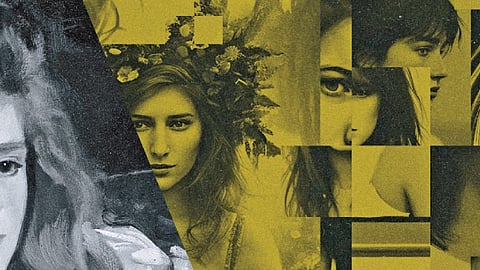

Last year ended with images flooding Instagram, Twitter and group chats — pictures of us, but not exactly. They were products of an app called Lensa AI, which can apply machine-learning tools to scan your selfies and generate portraits of you in a variety of artistic styles. This sort of thing seems to be a semi-annual trend: Every few months, an app emerges to collect photos of your face and manipulate your image, reflecting and refracting it back to you anew.
There have been tools allowing you to apply virtual makeup to selfies, to apply “art filters” imitating famous paintings, to morph into an animal. You could age yourself three decades; you could see yourself imagined as another ethnicity; you could swap your gender; you could become thinner, or bald.
Lensa’s process is fairly simple. You upload 10 to 20 selfies and pay a few dollars for a pack of “magic avatars,” selecting a set of artistic styles from a confusing range of options. (These include “Fairy Princess,” “Fantasy,” “Stylish,” “Light,” “Iridescent,” “Anime,” “Pop,” “Cosmic,” “Focus,” “Kawaii” and others.) Then you wait a few minutes for the app to spit its results at you, in a form that resembles trading cards: pictures that feel as though a whole selection of illustrators and commercial artists have spent their time crafting drawings and paintings of you, for movie posters or album covers or animated films about your life. (The technology involved was, after all, originally trained using huge volumes of images pulled from the internet, including real artists’ work.)
I spent $5.99 for a pack of 100 magic avatars, working from selfies I had taken over the last few months. (What was the original point of these selfies, anyway? In one, I’m showing off very red lipstick for friends; in another, I’m holding up a coffee cup and demonstrating that I’m tired; in most, it’s unclear what I’m doing or why I took them at all.) When the avatars appeared, I was startled: There I was and wasn’t. There was something unsettling and halfway-human about them. Some resembled me almost exactly, albeit me in, say, a golden headdress; others transformed my eyes into someone else’s, or gave me a nose that was not my nose. The aesthetics, no matter the chosen style, seemed anime-inflected, with a dose of photorealism. The portraits were, to my mind, ugly and strange, but there was no denying a certain amount of freakish accuracy. I couldn’t stop looking. I had perhaps never experienced the uncanny so directly, or at least in such direct relation to myself. I stared at a “Fairy Princess” version of me, crowned with flowers, eyes averted and lips pursed. Was that really me? Of course not. But also, maybe, a little bit, yes.
One thing about inhabiting a face is that we can never quite see it the way others do. Mirrors give us a reversed image. Photographs freeze us in time at odd angles and, sometimes, in pitiless detail.
This is part of the appeal of portraiture. It is not the objective reality of who we are but a version of how someone else sees us, translated onto the page or the canvas. It always astounds and moves me to think, while in art museums, that before photography, the only simple way to see a static image of yourself was through the brush or the pen or the chisel, necessarily filtered through another person’s creative intelligence.
Haigney is a journalist with NYT©2023
The New York Times
Visit news.dtnext.in to explore our interactive epaper!
Download the DT Next app for more exciting features!
Click here for iOS
Click here for Android